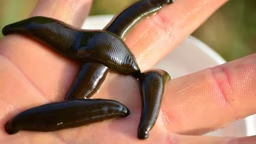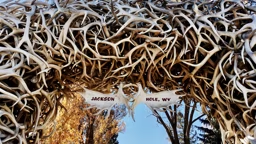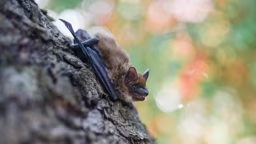Chances are, red foxes dig their dens, sneak around to hunt, and store a cache of food near your cabin. And they’re so stealthy, you may not even know it!
Diversifying habitat
The red fox (Vulpes vulpes) is a superbly successful member of the dog family and is found around the Northern Hemisphere. It inhabits climates from the Arctic tundra to the subtropical Gulf of Mexico, from the short-grass steppes of China to the sunny Mediterranean. Versatile in habitat selection, red foxes make their living in wilderness and suburb alike. Although they’re less likely to live where conditions are extreme, they exist wherever they can dig dens into the soil and find prey.
Hiding in plain sight
Weighing between 10 and 25 pounds, this long-legged, agile mammal is very active, but we seldom see foxes, because of their nocturnal habits and love of forest edges, thickets, tall grasses and cattail marshes. Because red foxes spend so much of their waking “day” while the rest of us are sound asleep, the red fox is able to live where we live.
Diversifying habitat
The red fox (Vulpes vulpes) is a superbly successful member of the dog family and is found around the Northern Hemisphere. It inhabits climates from the Arctic tundra to the subtropical Gulf of Mexico, from the short-grass steppes of China to the sunny Mediterranean. Versatile in habitat selection, red foxes make their living in wilderness and suburb alike. Although they’re less likely to live where conditions are extreme, they exist wherever they can dig dens into the soil and find prey.
Hiding in plain sight
Weighing between 10 and 25 pounds, this long-legged, agile mammal is very active, but we seldom see foxes, because of their nocturnal habits and love of forest edges, thickets, tall grasses and cattail marshes. Because red foxes spend so much of their waking “day” while the rest of us are sound asleep, the red fox is able to live where we live.
Training pups with play
Foxes den in early spring, digging a hole under a fallen log, in the side of a bank, or even atop a mound of softened soil. As pups begin to explore the den site, they become prolific diggers. In a short while, an active fox den becomes cratered with new holes and sagging soil.
While their mother is off hunting, pups spend much time underground, fearful of the world above. But as they grow, they gain confidence and spend hours lounging on the surface near the den’s entrances, especially when the sun is warm and bright.
Play at the den is equal parts exploration of textures, establishment of dominance through wrestling, and teething. As the pups grow, they expand their adventures into grasses and woodlots farther and farther from the safety of their extensive tunnels.
Fox dens become active nurseries, with an average of five pups turning everything in sight upside down.
Pups often teethe on twigs and drag around the soil-covered remnants of birds and rabbits. They wait to pounce on one another, colliding and tumbling in ways that are too adorable to put into words.
Foxes den in early spring, digging a hole under a fallen log, in the side of a bank, or even atop a mound of softened soil. As pups begin to explore the den site, they become prolific diggers. In a short while, an active fox den becomes cratered with new holes and sagging soil.
While their mother is off hunting, pups spend much time underground, fearful of the world above. But as they grow, they gain confidence and spend hours lounging on the surface near the den’s entrances, especially when the sun is warm and bright.
Play at the den is equal parts exploration of textures, establishment of dominance through wrestling, and teething. As the pups grow, they expand their adventures into grasses and woodlots farther and farther from the safety of their extensive tunnels.
Fox dens become active nurseries, with an average of five pups turning everything in sight upside down.
Pups often teethe on twigs and drag around the soil-covered remnants of birds and rabbits. They wait to pounce on one another, colliding and tumbling in ways that are too adorable to put into words.
Protecting the young
A mother fox is protective of her pups and cautious in her approach to the den, surveying the area for danger before causing her pups to scramble into the open as she arrives to nurse.
As she roams around the den, the pups tumble at her feet and greet her by nuzzling her mouth with their noses. Then, she is the picture of affection. She lovingly sniffs them and, with endless tolerance, winces while they nurse.
When the pups are older and exploring beyond the den, they seem to realize, as if by magic, when “Mom” comes back to nurse. They scurry home from all directions, hind feet kicking up dust.
Graduating the next generation
Within 8 to 9 weeks, some of the pups begin to look very much like grown foxes, surprisingly far ahead of the litter’s runt, who often remains clad in the fuzzy undercoat for days after the littermates have grown luxurious guard hairs.
A short time later, the pups leave the den and begin exploring their home range as a family group. The pups are quick to learn the skill sets that will set them free.
By autumn, the family group has disbanded, and the young of the year disperse far away to begin independent lives. By late winter, the pups are adults, seeking to start families of their own.
A mother fox is protective of her pups and cautious in her approach to the den, surveying the area for danger before causing her pups to scramble into the open as she arrives to nurse.
As she roams around the den, the pups tumble at her feet and greet her by nuzzling her mouth with their noses. Then, she is the picture of affection. She lovingly sniffs them and, with endless tolerance, winces while they nurse.
When the pups are older and exploring beyond the den, they seem to realize, as if by magic, when “Mom” comes back to nurse. They scurry home from all directions, hind feet kicking up dust.
Graduating the next generation
Within 8 to 9 weeks, some of the pups begin to look very much like grown foxes, surprisingly far ahead of the litter’s runt, who often remains clad in the fuzzy undercoat for days after the littermates have grown luxurious guard hairs.
A short time later, the pups leave the den and begin exploring their home range as a family group. The pups are quick to learn the skill sets that will set them free.
By autumn, the family group has disbanded, and the young of the year disperse far away to begin independent lives. By late winter, the pups are adults, seeking to start families of their own.
Home-base surveillance and maintenance
Foxes are superbly adapted carnivores that learn every in and out of their home ranges. Curiosity – blended with a strong capacity for learning and novel thought – forms a strong complement to the red fox’s innate survival instincts. A fox’s life is clearly built upon problem-solving and strategic planning.
In mastering the day-to-day art of survival, foxes build routines into finding food and maintaining comfort.
Often, fox territories are zigzagged with well-worn hunting trails, favorite hillsides for sunning and napping, escape tunnels, strategic vantage points, and many secret caches of food buried for later use.
In northern regions, red foxes often nap midday on the sheltered, sunny sides of snow-drifted hills, out in the open, hidden only by a complete lack of movement.
Foxes are superbly adapted carnivores that learn every in and out of their home ranges. Curiosity – blended with a strong capacity for learning and novel thought – forms a strong complement to the red fox’s innate survival instincts. A fox’s life is clearly built upon problem-solving and strategic planning.
In mastering the day-to-day art of survival, foxes build routines into finding food and maintaining comfort.
Often, fox territories are zigzagged with well-worn hunting trails, favorite hillsides for sunning and napping, escape tunnels, strategic vantage points, and many secret caches of food buried for later use.
In northern regions, red foxes often nap midday on the sheltered, sunny sides of snow-drifted hills, out in the open, hidden only by a complete lack of movement.
Using stealth to hunt and capture food
Much of the red fox’s life involves hunting for small prey, and an excellent sense of smell and large, sensitive ears make them efficient hunters. When a fox hears the rustle of a mouse, it stops long enough to triangulate the mouse’s location before vaulting skyward and curling back down to Earth in a paws-first plunge atop the unsuspecting rodent.
Much like northern owls, foxes are able to pinpoint mice rustling beneath a blanket of snow by using their ears alone.
In its pursuits of prey, a fox lives by its feet; it will cover miles of trail within its 5- to 25-square-mile territory. During hours and hours of trotting, a fox tips the odds in its favor by ambushing its prey. When a bird or rabbit springs to action, the fox puts on a burst of speed with lightning- quick reflexes.
I have found a vast assortment of bird remains in fox dens, from ring-necked pheasant feathers to the skull and feathers of a barred owl.
As dependent as foxes are on small mammals, birds and eggs, their summer diet is also rich in fruits, vegetable matter and berries. In so many ways, Vulpes vulpes is the supreme generalist.
Much of the red fox’s life involves hunting for small prey, and an excellent sense of smell and large, sensitive ears make them efficient hunters. When a fox hears the rustle of a mouse, it stops long enough to triangulate the mouse’s location before vaulting skyward and curling back down to Earth in a paws-first plunge atop the unsuspecting rodent.
Much like northern owls, foxes are able to pinpoint mice rustling beneath a blanket of snow by using their ears alone.
In its pursuits of prey, a fox lives by its feet; it will cover miles of trail within its 5- to 25-square-mile territory. During hours and hours of trotting, a fox tips the odds in its favor by ambushing its prey. When a bird or rabbit springs to action, the fox puts on a burst of speed with lightning- quick reflexes.
I have found a vast assortment of bird remains in fox dens, from ring-necked pheasant feathers to the skull and feathers of a barred owl.
As dependent as foxes are on small mammals, birds and eggs, their summer diet is also rich in fruits, vegetable matter and berries. In so many ways, Vulpes vulpes is the supreme generalist.
SEIZING AN OPPORTUNITY
The hungry fox knew exactly what it was doing. The spring day in northern Wisconsin had turned into a fierce winter storm with subzero temps – cold enough to freeze the lake where Canada geese had spent the last 3 weeks tending their nests, safe from four-legged predators. But not today.
The fox trotted into the islands of nesting geese and darted in and out, luring the angry birds to their feet. One by one, it robbed the eggs from under them and carried its treasures across the ice.
The fox would bury them under snow, leaves, and sandy soil for future meals. Those geese unlucky enough to have lost their eggs would lay another clutch soon enough, but one vulnerable goose became a meal as well.
The hungry fox knew exactly what it was doing. The spring day in northern Wisconsin had turned into a fierce winter storm with subzero temps – cold enough to freeze the lake where Canada geese had spent the last 3 weeks tending their nests, safe from four-legged predators. But not today.
The fox trotted into the islands of nesting geese and darted in and out, luring the angry birds to their feet. One by one, it robbed the eggs from under them and carried its treasures across the ice.
The fox would bury them under snow, leaves, and sandy soil for future meals. Those geese unlucky enough to have lost their eggs would lay another clutch soon enough, but one vulnerable goose became a meal as well.
















